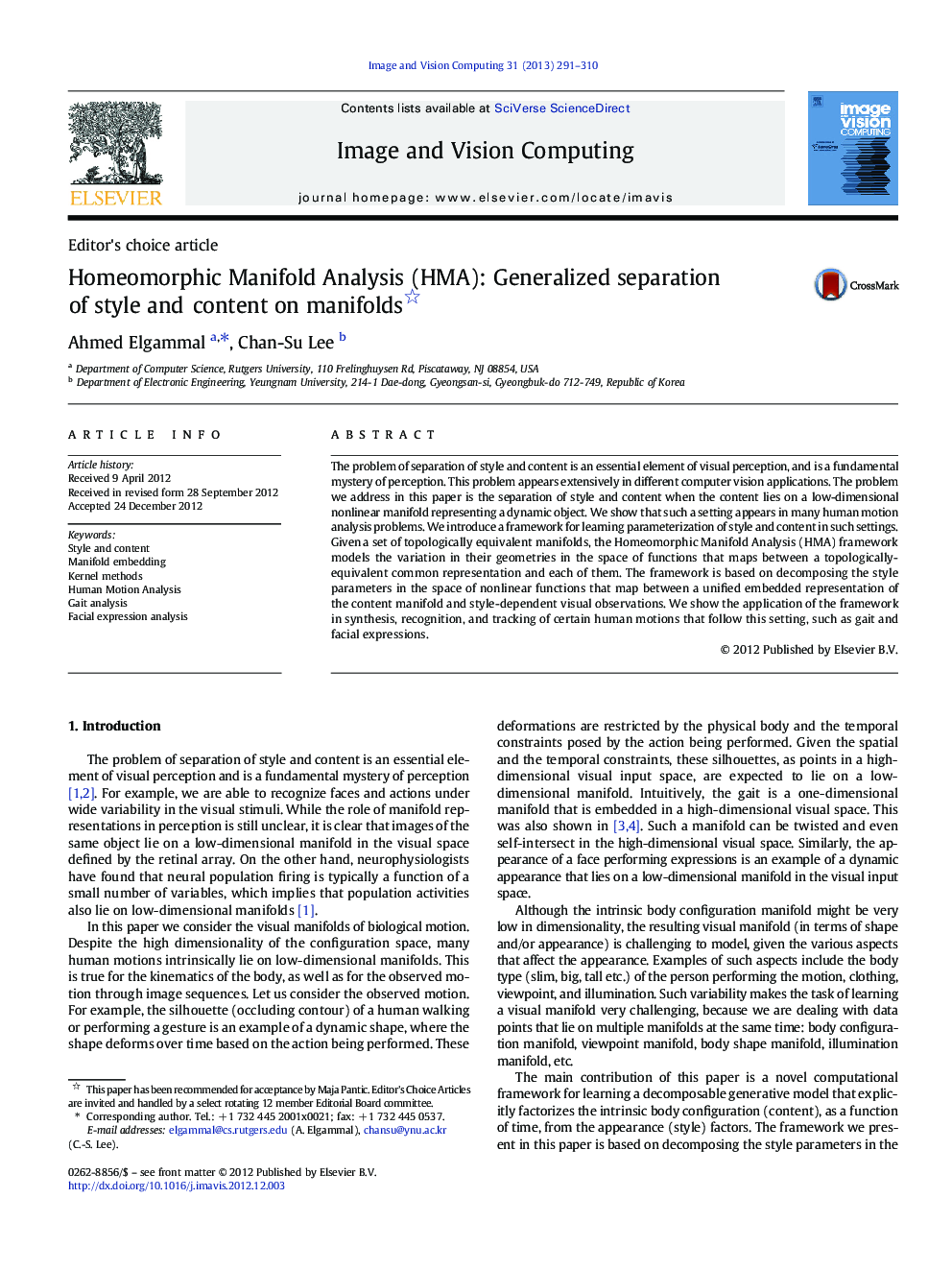| Article ID | Journal | Published Year | Pages | File Type |
|---|---|---|---|---|
| 528701 | Image and Vision Computing | 2013 | 20 Pages |
The problem of separation of style and content is an essential element of visual perception, and is a fundamental mystery of perception. This problem appears extensively in different computer vision applications. The problem we address in this paper is the separation of style and content when the content lies on a low-dimensional nonlinear manifold representing a dynamic object. We show that such a setting appears in many human motion analysis problems. We introduce a framework for learning parameterization of style and content in such settings. Given a set of topologically equivalent manifolds, the Homeomorphic Manifold Analysis (HMA) framework models the variation in their geometries in the space of functions that maps between a topologically-equivalent common representation and each of them. The framework is based on decomposing the style parameters in the space of nonlinear functions that map between a unified embedded representation of the content manifold and style-dependent visual observations. We show the application of the framework in synthesis, recognition, and tracking of certain human motions that follow this setting, such as gait and facial expressions.
Graphical abstractFigure optionsDownload full-size imageDownload high-quality image (241 K)Download as PowerPoint slideHighlights► We propose a framework for separating style variables on manifolds of human motion. ► We propose a framework for learning parameterized deformation functions of visual manifolds. ► We use the framework to model human gait and factoring viewpoint and shape style variables apart from the motion. ► We showed the application of the framework to model facial expressions for recognition and synthesis.
